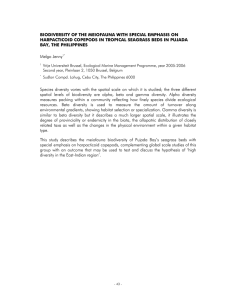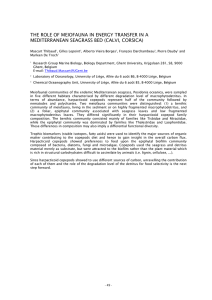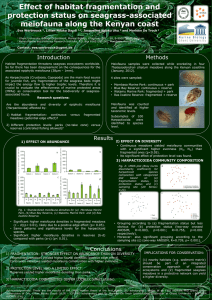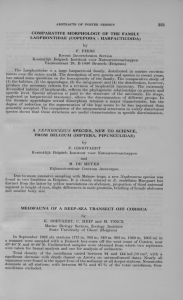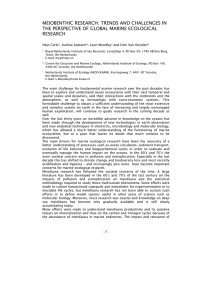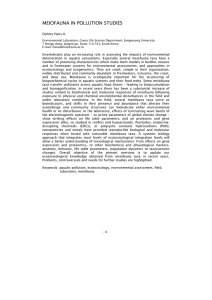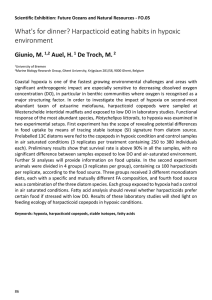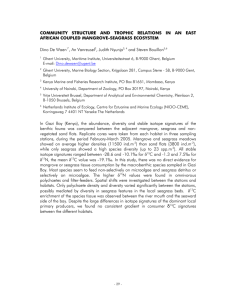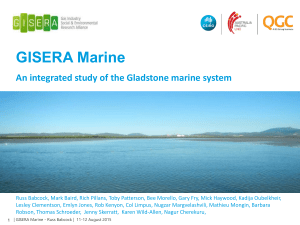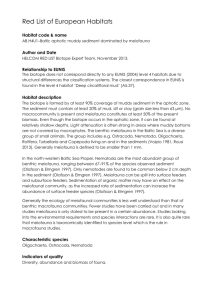Effect of habitat fragmentation and protection status on seagrass-
advertisement
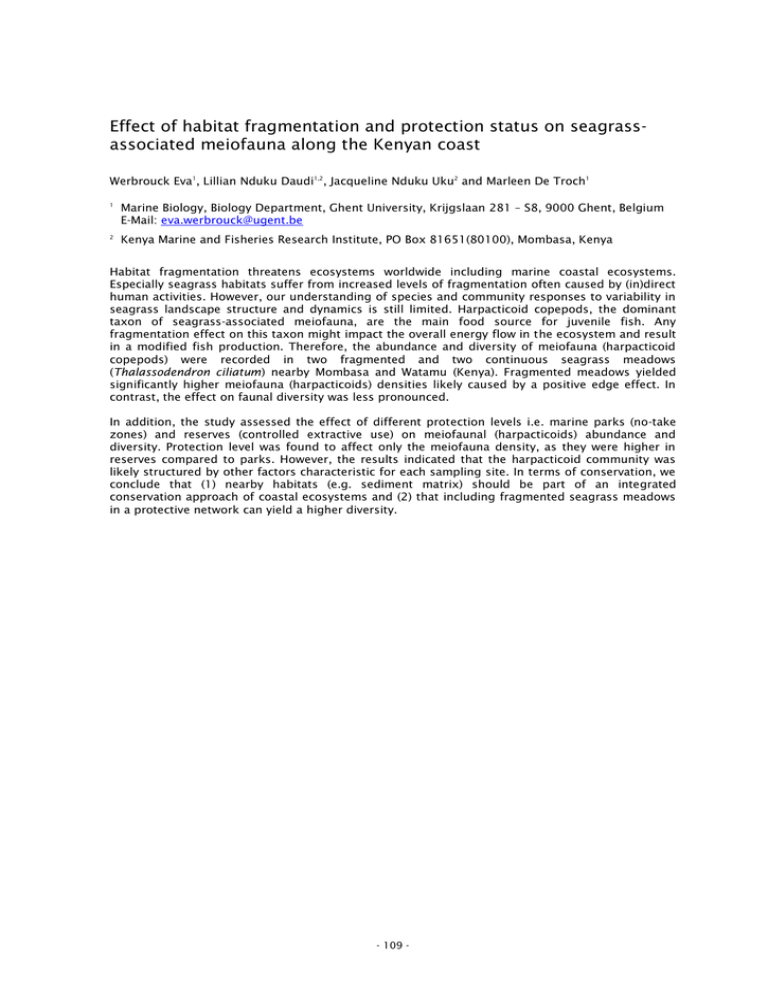
Effect of habitat fragmentation and protection status on seagrassassociated meiofauna along the Kenyan coast Werbrouck Eva1, Lillian Nduku Daudi1,2, Jacqueline Nduku Uku2 and Marleen De Troch1 1 Marine Biology, Biology Department, Ghent University, Krijgslaan 281 – S8, 9000 Ghent, Belgium E-Mail: eva.werbrouck@ugent.be 2 Kenya Marine and Fisheries Research Institute, PO Box 81651(80100), Mombasa, Kenya Habitat fragmentation threatens ecosystems worldwide including marine coastal ecosystems. Especially seagrass habitats suffer from increased levels of fragmentation often caused by (in)direct human activities. However, our understanding of species and community responses to variability in seagrass landscape structure and dynamics is still limited. Harpacticoid copepods, the dominant taxon of seagrass-associated meiofauna, are the main food source for juvenile fish. Any fragmentation effect on this taxon might impact the overall energy flow in the ecosystem and result in a modified fish production. Therefore, the abundance and diversity of meiofauna (harpacticoid copepods) were recorded in two fragmented and two continuous seagrass meadows (Thalassodendron ciliatum) nearby Mombasa and Watamu (Kenya). Fragmented meadows yielded significantly higher meiofauna (harpacticoids) densities likely caused by a positive edge effect. In contrast, the effect on faunal diversity was less pronounced. In addition, the study assessed the effect of different protection levels i.e. marine parks (no-take zones) and reserves (controlled extractive use) on meiofaunal (harpacticoids) abundance and diversity. Protection level was found to affect only the meiofauna density, as they were higher in reserves compared to parks. However, the results indicated that the harpacticoid community was likely structured by other factors characteristic for each sampling site. In terms of conservation, we conclude that (1) nearby habitats (e.g. sediment matrix) should be part of an integrated conservation approach of coastal ecosystems and (2) that including fragmented seagrass meadows in a protective network can yield a higher diversity. - 109 -
